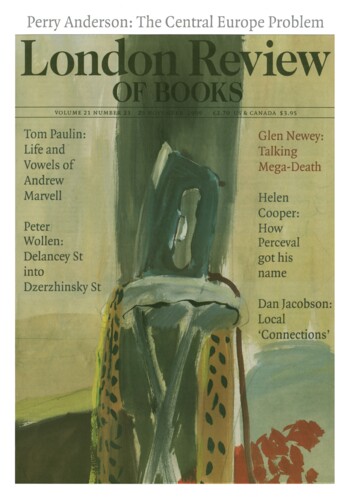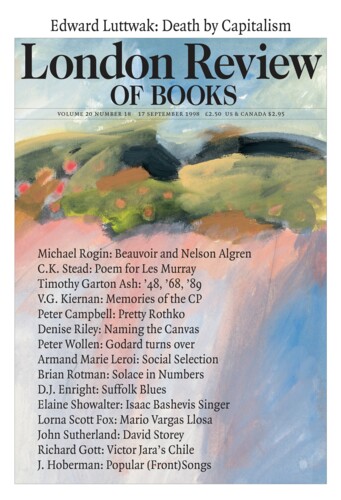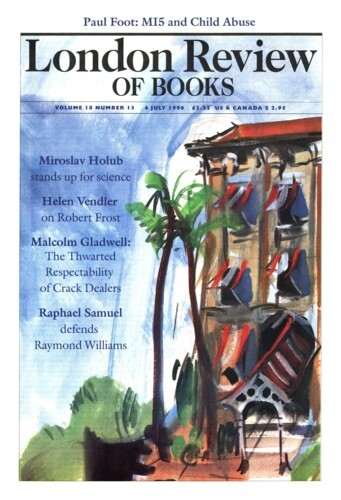Stalin at the Movies: The Red Atlantis: Communist Culture in the Absence of Communism by J. Hoberman
Peter Wollen, 25 November 1999
J. Hoberman’s book, appropriately enough, is a cinematic montage of reflections on the long-drawn-out demise of the former Soviet Union, seen through the eyes of a New York journalist and film critic: a process that began with the death of Stalin and ended with the sale of chunks of the Berlin Wall in Bloomingdale’s. Hoberman chronicles these events from the point of view of three related personae: the thoughtful Jewish New Yorker, reading the novels of Victor Serge or reconsidering the Rosenberg case; the compulsive film aficionado, intrigued by the representation of the Communist world in Soviet films, Hollywood movies and the work of the East European New Wave directors, such as Gyula Gazdag or Dusan Makavejev; and then the cultural historian, provoked by the appearance in a New York gallery of Sots Art, an ironic appropriation of ‘socialist’ art by Vitaly Komar and Alexander Melamid, into trying to understand the deeper significance of Socialist Realism. This fascinating book swoops and lurches from topic to topic, but the reader’s feeling of disorientation is more than compensated for by the exhilaration of the ride, which ends in a nightmare dream-sequence, a crazy amalgam of Hellzapoppin’ and October (‘an imaginary documentary projected on actual locations’) with the Rosenbergs cast as ‘the Lone Ranger and Tonto of Knickerbocker village’. In other words, a provocatively chaotic and hilarious book about a rigorously controlled and tragic era.‘





